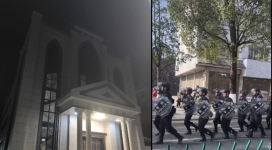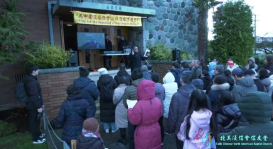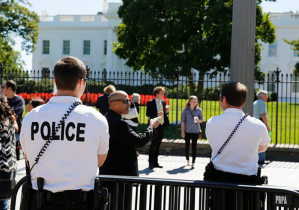
He scaled the north fence of the White House, zigzagged across the north lawn, and entered the nation's capital through the door of the North Portico. While that may sound like a scene from a movie trailer that is exactly what occurred on Sept. 19 when 42-year-old Iraq War Army veteran Omar Jose Gonzalez put the slip on the Secret Service.
Getting past more than 10 officers, and amid nearly a dozen failures in a layered security system, Gonzalez found a penetrable section in the fence and was deep inside the White House within minutes.
As details of September's incident emerge, and the Homeland Security report points to "findings concerning the performance, organizational, technical and other factors," evidence highlighting opportunity after opportunity to avoid September's breach continues to mount.
"The entire Secret Service workforce is dedicated to ensuring that we provide the highest level of protection to the people and facilities we protect," said Ed Donovan, Secret Service Spokesman. "We must take this opportunity to make any necessary changes and improvements related to carrying out our protective mission to regain the trust of the American people."
Perhaps most concerning are the numerous missed opportunities to thwart Gonzalez, who had encounters with law enforcement in the greater Washington metropolitan area two months prior.
According to the Homeland Security report, he was stopped for driving violations in mid-July in Virginia, and at that time, had 11 fire arms in his possession. A search of his car two days later by the Virginia State Police and Bureau of Alcohol, Tobacco, Firearms and Explosives turned up a map of Washington, DC highlighting the White House and two other locations.
Just one month later, on Aug. 25, a Secret Service officer spotted Gonzalez near the White House - a hatchet concealed under his clothing. He was interviewed, and following a determination that possession of a hatchet did not violate D.C. law, he was released.
But not until after his release did an officer run Gonzalez's name through the Secret Service protective intelligence database to discover that he was the subject of an ongoing case. He was found again minutes later, and following his consent to a vehicle search, officers discovered several empty firearms cases, four hatchets, several bottles of urine and camping gear.
When he showed up again on September 19 and was recognized from - what the report calls - the "hatchet incident," three Secret Service officers failed to notify any other unit on the White House grounds of his presence. When he began scaling the fence, he ignored officers commanding him to stop, and thus began what House Judiciary Committee Chairman Bob Goodlatte called a "comedy of errors."
From construction materials blocking officer's views to a break down in radio communication and even a door to the White House unsecured, error after error created the perfect opportunity for Gonzalez to get inside - even as he tripped alarms along his path.
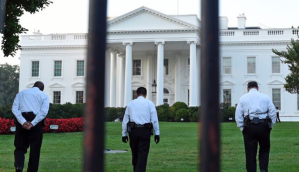
One officer announced over the radio that there was a jumper but never made an additional announcement because he did not want to talk over the other responders inside the White House grounds, the report said. Little did he know, the Joint Operations Center did not have the capability of broadcasting his transmissions, and officers located inside the capital never heard his warning.
Further alert systems had been muted at the request of the White House ushers office.
Approaching the White House, he ran past agents who had determined that lethal force was not appropriate because he did not appear to be armed. Gonzalez was dressed in street clothes, and armed with only a knife in his pocket.
Surveillance footage shows him quickly maneuvering through the thick bushes in front of the North Portico.
Without clear radio communication, a canine officer became aware of the incident when he saw the foot chase near the north fence, and noticed a fellow officer running after Gonzalez. But the canine officer was on a personal call on his cell phone, and had taken his radio earpiece out of his ear. Any decipherable communication that had made it through wouldn't have reached him.
He also left his second radio in his locker, and held off on releasing the canine unit because he believed Gonzalez could not make it through the thick bushes near the White House.
Battling views obstructed by bushes, pillars, parked vehicles and the fading evening light, the officer stationed at the North Portico door never knew Gonzalez was coming, and never heard any communication from fellow officers regarding a jumper.
That officer placed himself behind a pillar, per training protocol, and believing the North Portico door secure, did not attempt to approach Gonzalez as he moved closer. Gonzalez easily made his way inside the White House, and overcame the officer stationed at the door due to the size disparity between the two, the report states. Following two attempts to take him down, he freed himself, ran the entire length of the White House and was finally apprehended deep in the East Room.
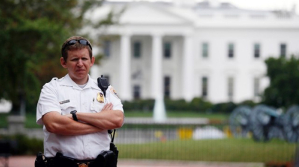
The Secret Services' emergency response team was unaware of the layout of the White House and did not follow Gonzalez inside.
Rep. Michael McCaul (R-Tex.), chairman of the House Homeland Security committee, called Thursday for an independent and extremely thorough review of the Secret Service in light of this incident and the recent increase in the number of security breaches. He also introduced legislation that would create an external advisory board to review all facets of the agency.
"Several high-profile incidents have caused Americans to question the leadership and management of the U.S. Secret Service," McCaul said in a statement the committee released. "The men and women of the Secret Service deserve an organization that is efficient and effective, and the American people deserve confidence that the Service can effectively perform its vital missions. My legislation will create a panel to conduct a truly independent, bipartisan, top-to-bottom review."
Gonzalez has pleaded not guilty to charges of unlawfully entering a restricted building while carrying a deadly weapon and other weapons charges.




